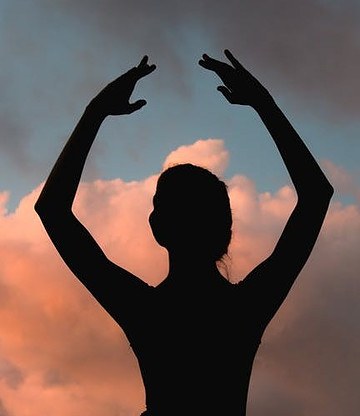Because dance is a moving art form, sometimes it is good to concentrate on stillness in dance. This is something that we don’t think about a lot but is quite important in getting an overall picture of a dance and understanding what stillness in dance is all about.
 How To Incorporate Stillness In Dance Into Your Classes
How To Incorporate Stillness In Dance Into Your Classes
What is the opposite of moving? Stopping.
So today in class you can tell the children that you are going to concentrate on stopping.
Let them dance freely to a drum beat or music and stop when you stop playing the drum or stop the music.
Now tell them to stop whenever they like whether or not the drum or music stops playing.
Try playing lively music, which makes it more difficult to find a still position as the body will naturally want to move.
Now experiment with shapes.
Tell them to make a shape like a sculpture when they stop. They should be interesting to look at from all sides. Let them stop for a short or long a time as they like. Let them feel what it is like to stop while others are moving around them, and also what it feels like when others have stopped and they are moving.
Next, tell them to forget about stopping for a bit and think about the free-flowing movement that has no thought of stopping. The body must feel itself moving through space and they should feel the air moving past them all the time. Let them run and feel the air move past their faces. They should move fast enough to feel the temperature of the air.
Now let them try walking as slowly as they can and still move with enough pressure to feel the air pass them.
Now try moving in the same free-flowing way but change the levels. Try sitting, rolling and spinning but keep them moving.
Let your students sit on the floor and use just their arms in a free manner feeling the air passing through and by them. Then stop and hold until the air is quiet. It must feel like they are churning the air. This is called a bound movement.
Try letting them move the arms in the same pathways and feel like they are pushing them through heavy water (also a bound movement). The arms should no longer feel free. Next add stops and short moves, making the arms jerky.
Let your pupils start combining free-flowing and bound movements now with their whole bodies through space and try adding some balance in on the stops. Let them try balancing at low levels, one knee or high on the ball of one foot. Aim to let them make the balance feel as exciting as the movement and let them try to hold the balance for as long as they can, so they can feel the body and the air around them become still and quiet.
For this exercise, it is best not to play any accompaniment, so that the dancers can establish their own rhythms.
At the end of the stillness in dance session let them combine free-flowing movement, bound movement and balance with music. Let them feel what it is like to move freely, in a bound way and then to hold a balance while the music is still playing.
While all this is happening, make sure that your pupils are making use of all their space. This sort of movement should feel good and be enjoyable for the children. As they grow, their movements should show increases in both variety and range.

